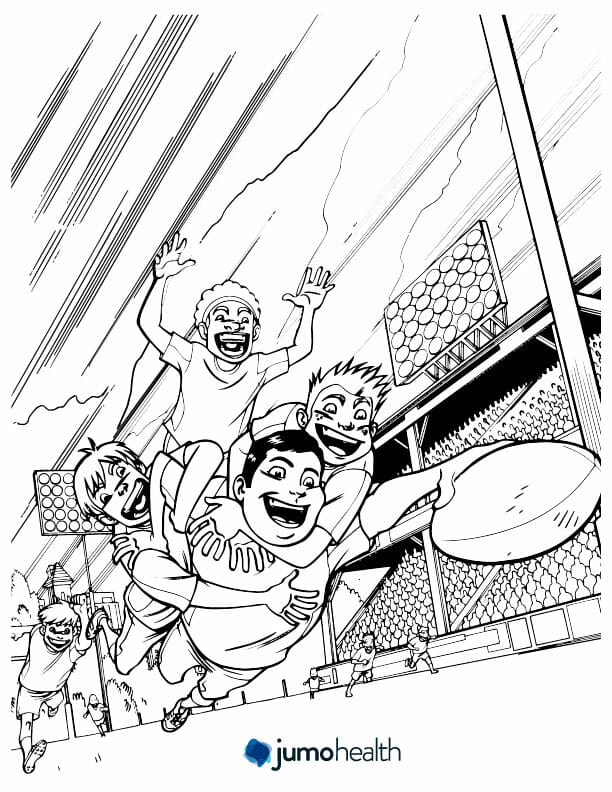Use Arts and Crafts to Practice Speech at Home
Speech pathologists often use arts and crafts for speech therapy. It’s a colorful and creative way to engage a child while they practice receptive and expressive language skills.
Why arts and crafts for speech therapy?
For years, Kidmunicate speech pathologists have been incorporating naturalistic methods like art therapy into their treatment plans. We often use arts and crafts for speech therapy to address receptive and expressive language issues. Receptive language is the component of speech that refers to an individual’s ability to comprehend language, while expressive concerns the ability to communicate effectively. Both of these language skills are essential to the arts and crafts process, which makes arts and crafts a perfect activity for language development.
Additionally, art therapy creates a calming environment for your child to develop within. This presents the opportunity to receive tremendous benefits for their mental health.
How to target receptive and expressive language development
When you engage your child with arts and crafts, approach it with three goals; 1) to practice receptive language skills, 2) to encourage expressive language skills and 3) to enjoy the emotionally therapeutic benefits.
Receptive language helps a child with things like making sense of instructions. When being creative at home, make a game out of your child’s art in order to tap into receptive language development. When coloring, provide instructions regarding where to color, when to color, and with what shade to fill the area in. Adding some structure to craft time will compel them to pause, listen, and process the instructions given.
Expressive language helps your child with things like communicating what they need, like, or want. As your child works through the instructions you’ve provided, keep the coloring supplies out of reach. Allow your child’s receptive skills work to process and understand what is being asked, then encourage them to utilize their expressive skills to obtain the correct material needed to complete the task. This will provide an opportunity for standard word recognition and pronunciation. You can help your child identify the correct color and encourage repetitive pronunciation while they for its use!
Arts and Crafts should be fun and easy going. Create a calm environment. Work on language skills, but don’t force it. Let it happen naturally. If you do, your child will benefit from the emotionally therapeutic benefits of coloring while strengthening their cognitive abilities as well.
Here are some examples of using art to improve receptive and expressive language skills for children with apraxia or children who are reluctant to use their words due to fear of being unable to produce or retrieve the word they want to use.
- Many times if I present a receptive task such as, “Get the red crayon” (while presenting two crayons), they are more willing to reach for the red crayon. Then get them to say “red” or “red crayon” by asking what color do you want?
- I also use indirect strategies during craft time to ask “What is your favorite color?”, but I word it differently to decrease the “on demand” task. Instead, I would say “My favorite color is purple, I wonder what your favorite color is?” This type of question gives them an option to answer or not. This makes it less stressful, so they often are more willing to answer.
- I also use arts and crafts for speech therapy to work on pragmatic skills such as requesting, protesting, terminating the activity, asking for help or additional information and conversational turn-taking. Here’s a situation where they have to ask for the materials.
- “Let’s glue the eyes on.” Then I give them the eyes and wait. They may just look around at first. Then I will provide visuals with choices. If they still cannot indicate what they need. “Oh no, what do we need?” This way, they can point to the glue or they can verbalize “glue”.
- If we are making a snowman, depending on the child’s level. I will say, “I made a snowman.” And wait to see if they add on to the conversation. “Did you make a snowman?” I always have visuals provided to aid their ability to answer.
How art goes beyond your child’s language
The use of art with speech therapy goes beyond speech and language development and into a self-care territory. Art therapy draws on artistic and creative processes for a psychological benefit, allowing an individual to navigate self-expression, cope with toxic stress, or work through identity concerns. Art is an accessible way for children to express a variety of emotions they are otherwise unable to verbalize. Should your child be experiencing mental health stress, this can help them work on expressing these feelings and enable you to detect concerns and promote wellness early on.
Encouraging your child to exercise creativity every day can also serve as the foundation for a soothing self-care routine. You can make arts and craft time a bonding experience and use this time to check in about feelings towards school, friends and family. Please note that arts and crafts do not always need to be speech and language focused, let your child color independently to teach the importance of peaceful alone time for a healthy, balanced life. Play around with the number of days you practice art with your child or the various ways you practice beyond speech therapy in order to discover the most beneficial routine for their mental health! Both your child’s creative and language abilities, as well as their mental well-being will soar.
The Kidmunication Point
For parents of children with communication disorders, use arts and crafts for speech therapy at home routinely. It will benefit your child’s cognitive and emotional well-being
Download free coloring pages like the one below from our friends at Jumo Health.
About Jumo
Two compassionate medical professionals wanted to alleviate the anxiety that often accompanies a diagnosis. Jumo Health seeks to empower children living with medical conditions through comic books and superheroes, today Jumo provides a suite of resources for children and families in print and digital formats, using videos, podcasts, and games.


